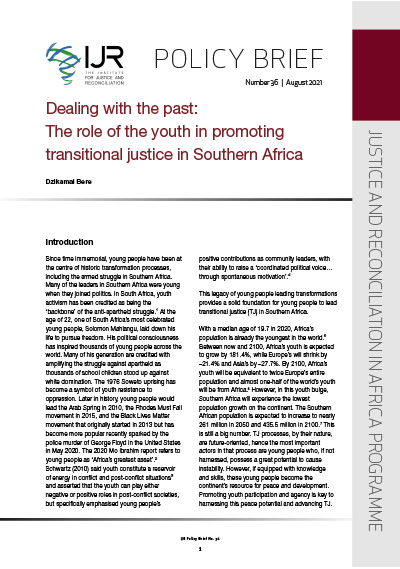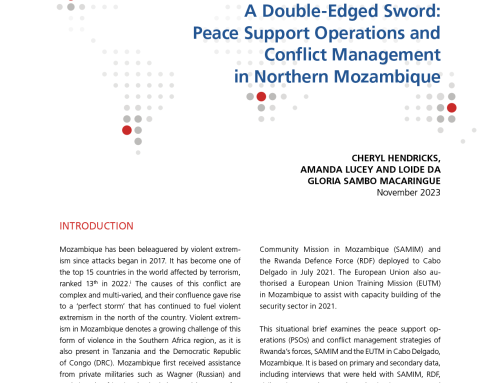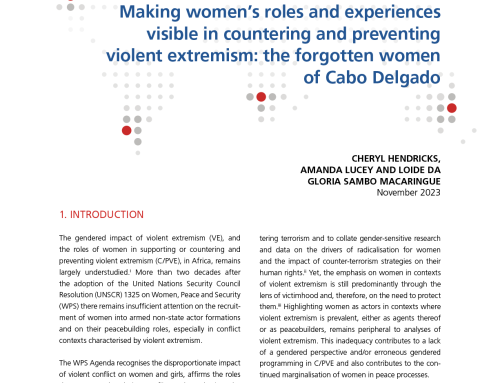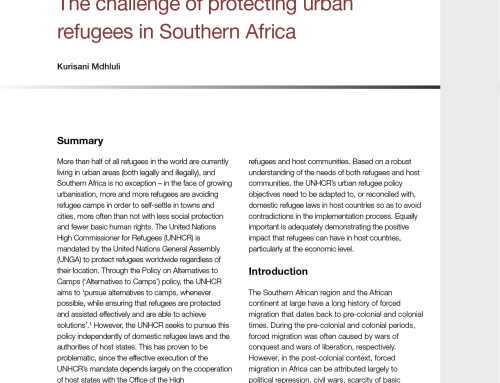
IJR Policy Brief 36: Dealing with the past: The role of the youth in promoting transitional justice in Southern Africa
Since time immemorial, young people have been at the centre of historic transformation processes, including the armed struggle in Southern Africa. Many of the leaders in Southern Africa were young when they joined politics. In South Africa, youth activism has been credited as being the ‘backbone’ of the anti-apartheid struggle.1 At the age of 22, one of South Africa’s most celebrated young people, Solomon Mahlangu, laid down his life to pursue freedom. His political consciousness has inspired thousands of young people across the world. Many of his generation are credited with amplifying the struggle against apartheid as thousands of school children stood up against white domination. The 1976 Soweto uprising has become a symbol of youth resistance to oppression. Later in history, young people would lead the Arab Spring in 2010, the Rhodes Must Fall movement in 2015, and the Black Lives Matter movement that originally started in 2013 but has become more popular recently sparked by the police murder of George Floyd in the United States in May 2020. The 2020 Mo Ibrahim report refers to young people as ‘Africa’s greatest asset’.2. Schwartz (2010) said youth constitute a reservoir of energy in conflict and post-conflict situations3 and asserted that the youth can play either negative or positive roles in post-conflict societies, but specifically emphasised young people’s positive contributions as community leaders, with their ability to raise a ‘coordinated political voice…through spontaneous motivation’.4
This legacy of young people leading transformations provides a solid foundation for young people to lead transitional justice (TJ) in Southern Africa.
With a median age of 19.7 in 2020, Africa’s population is already the youngest in the world.5 Between now and 2100, Africa’s youth is expected to grow by 181.4%, while Europe’s will shrink by –21.4% and Asia’s by –27.7%. By 2100, Africa’s youth will be equivalent to twice Europe’s entire population and almost one-half of the world’s youth will be from Africa.6 However, in this youth bulge, Southern Africa will experience the lowest population growth on the continent. The Southern African population is expected to increase to nearly 261 million in 2050 and 435.5 million in 2100.7 This is still a big number. TJ processes, by their nature, are future-oriented, hence the most important actors in that process are young people who, if not harnessed, possess a great potential to cause instability. However, if equipped with knowledge and skills, these young people become the continent’s resource for peace and development. Promoting youth participation and agency is key to harnessing this peace potential and advancing TJ. This policy brief outlines the key points of reflection on the role of young people in TJ. It begins by highlighting key aspects of the African Union Transitional Justice Policy (AUTJP), then goes on to locate young people within the AUTJP. The brief identifies the key roles that young people can play as well as the key principles and policy recommendations for the youth, policy, and advocates and practitioners in Southern Africa.
By: Dzikamai Bere
Pages: 10
Dimensions: A4
Date of publication: 2021




